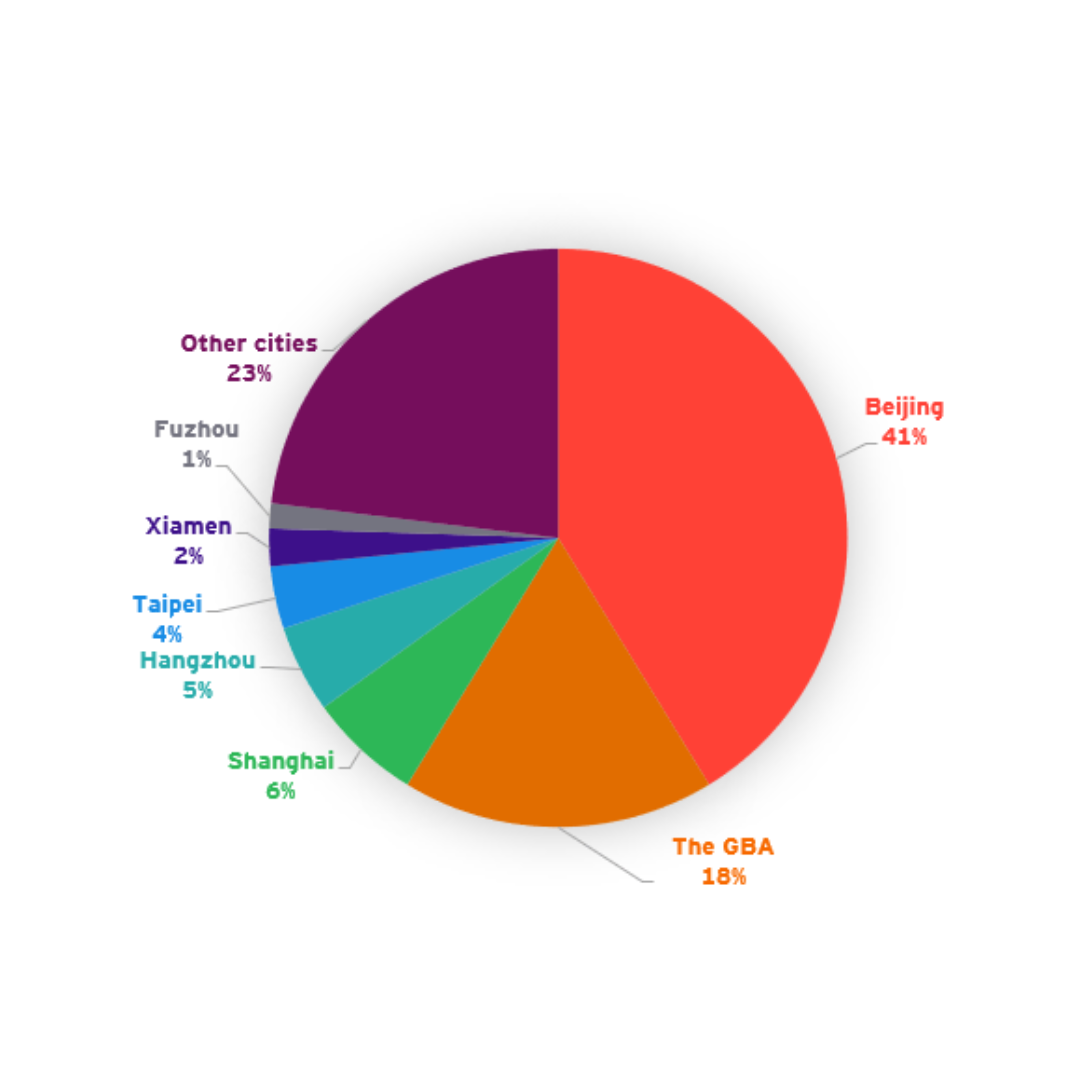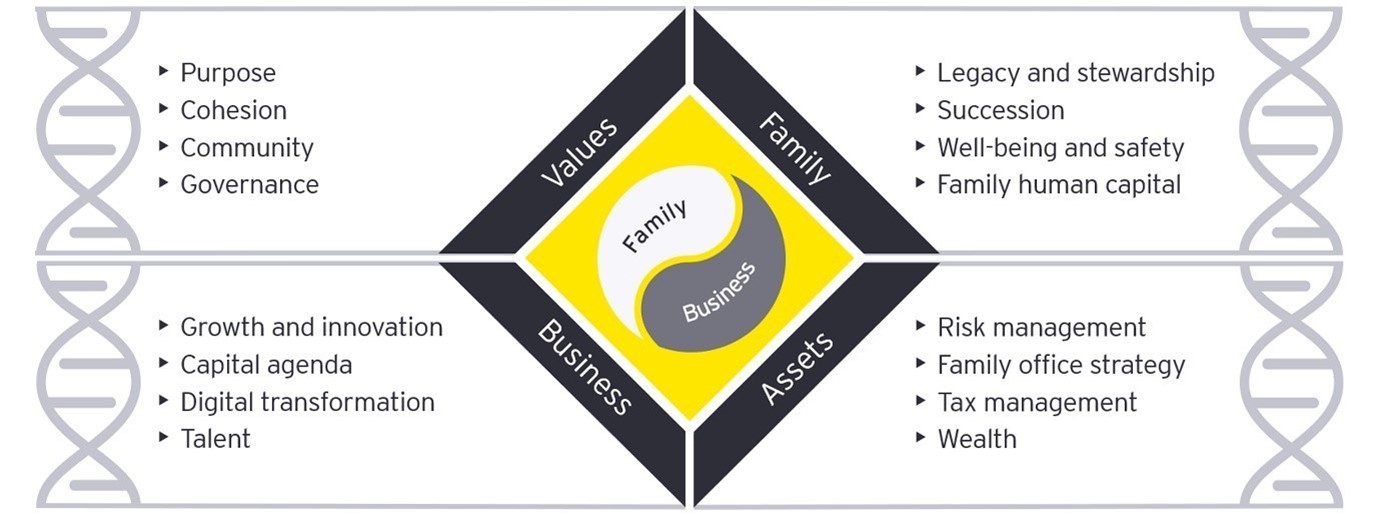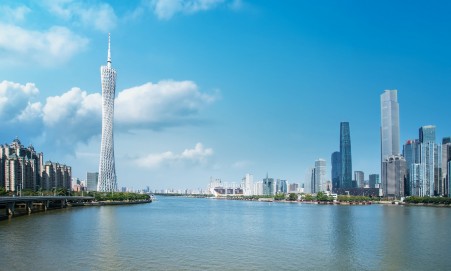A good timing with a right opportunity is important. Well-known entrepreneurs with commercial and social impact are emerging in the GBA. According to Fortune Global 500 ranking in 2021, 143 Fortune Global 500 enterprises are in the Greater China region and 25 of them are in the GBA4, accounting for 17.48% of the listed Chinese enterprises mentioned above. In addition, according to JDYD LIQUOR - Hurun Global Rich List 2022 announced by Hurun Research Institute5, China ranked the first for the second consecutive year with 1,133 entrepreneurs whose total wealth was at USD1 billion or above, 300 of them are from the GBA, including a total of 276 entrepreneurs from Hong Kong, Shenzhen, Guangzhou and Foshan. Entrepreneurs from these four cities took up over 80% of the ones from GBA on the list. With further industrial integration in the GBA, it is believed that increasingly more entrepreneurs will accumulate wealth and create value in this vibrant city cluster.
Chart 3: Breakdown of cities of Chinese enterprises listed in Fortune Global 500 ranking in 2021
Chart 4: Breakdown of cities of Chinese enterprises listed in JDYD LIQUOR - Hurun Global Rich List 2022


Recently EY PCS team visited a group of GBA entrepreneurs and had a better understanding of their concerns during their business life cycle, including the challenges they faced since the outbreak of the pandemic. We understand that the vast majority of these entrepreneurs operate family businesses, with family members across generations working in the same enterprises and/or holding shares of the enterprises. Their main concern is on how to achieve sustainable development in their family and business performances under an environment with constant emerging disruptions.
Portraits of the GBA entrepreneurs
According to our observations, the GBA entrepreneurs may mainly be classified into the following three categories, each with their unique characteristics and challenges:
The development and legacy of family enterprises in the GBA
Unlike other types of enterprises, family enterprises have unique needs as they pursue development in their family and the enterprise respectively. Therefore, entrepreneurs need to balance their personal and business performance agendas. The following diagram shows the EY Family Enterprise DNA Model concluded based on our experience and knowledge of family enterprises who have successfully passed on their wealth to the third generation. We can see from the diagram that the key is to pursue collaborative development in family and business performance by embedding the four key success factors into their DNA: shared values, family succession and legacy, wealth management and growth and innovation.

Family enterprises in the GBA enjoy advantages of business environment, geographical location, industrial infrastructure, supporting government policies and talent mobility. Therefore, to achieve the success of legacy and development of family enterprises, entrepreneurs in the GBA should make the best use of the development trends and government policies in the GBA along with the consideration of the family background, family values and family enterprise’s future development plan to design a governance framework that enables the most suitable decisions to support a sustainable future of the family enterprise.
Concerning the above, EY will release a series of articles on the sustainable growth of GBA enterprises by analyzing the challenges they are facing and sorting key factors that facilitate family enterprises operation and succession. With these articles, we hope to inspire entrepreneurs in the GBA and assist them to build a prosperous future for the GBA.
Summary
In spite of the challenges from digital transformation, risks, strategies and tax management, family enterprises in the GBA would need to establish their value and vision, and plan for family succession for sustainability and prosperity of the enterprise and the family.




